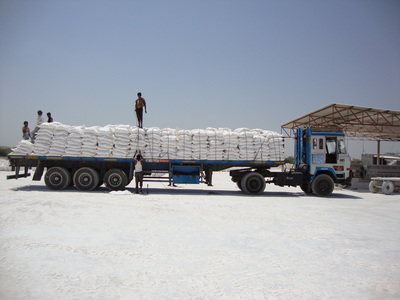- HOME
- LIST OF PRODUCTS
- CERTIFICATES
-
PRODUCT GALLERY
- SALT TABLETS
- SALT
- PIGMENTS
- SILICA RAMMING MASS
- SILICA QUARTZ
- SODA ASH
- SILICA SAND
- PEBBLES
- FELDSPAR
- CERAMIC TILES
- ANTHRACITE
- GRAVELS AND ANTHRACITE
- BENTONITE
- AGGREGATE
- SOYA BEAN MEAL
- BARITE
- SENNA LEAVES & PODS
- BAUXITE ORE
- TALC LUMPS & POWDER
- EMERY GRAIN
- GARNET SAND
- BLEACHING EARTH
- ATTAPULGITE / FULLERS EARTH
- HEMATITE
- DIATOMACIOUS EARTH
- FLY ASH
- DOLOMITE
- CHINA CLAY
- RICE
- WHEAT
- BISCUITS , Toffees , Candys
- GARDEN AND LANDSCAPING PLANTS
- PHOTO GALLERY
- CONTACT
DOLOMITE
Dolomite is an anhydrous carbonate mineral composed of calcium magnesium carbonate, ideally CaMg(CO3)2. The word dolomite is also used to describe the sedimentary carbonate rock, which is composed predominantly of the mineral dolomite.
PropertiesThe mineral dolomite crystallizes in the trigonal - rhombohedral system. It forms white, tan, gray, or pink crystals. Dolomite is a double carbonate, having an alternating structural arrangement of calcium and magnesium ions. It does not rapidly dissolve or effervesce (fizz) in dilute hydrochloric acid as calcite does. Crys tal twinning is common.
Solid solution exists between dolomite, the iron-dominant ankerite and the manganese-dominant kutnohorite. Small amounts of iron in the structure give the crystals a yellow to brown tint. Manganese substitutes in the structure also up to about three percent MnO. A high manganese content gives the crystals a rosy pink color. Lead Zinc, and cobalt also substitute in the structure for magnesium. The mineral dolomite is closely related to huntite Mg3Ca(CO3)4.
Because dolomite can be dissolved by slightly acidic water, areas of dolomite are important as aquifers and contribute to karst terrain formation
PropertiesThe mineral dolomite crystallizes in the trigonal - rhombohedral system. It forms white, tan, gray, or pink crystals. Dolomite is a double carbonate, having an alternating structural arrangement of calcium and magnesium ions. It does not rapidly dissolve or effervesce (fizz) in dilute hydrochloric acid as calcite does. Crys tal twinning is common.
Solid solution exists between dolomite, the iron-dominant ankerite and the manganese-dominant kutnohorite. Small amounts of iron in the structure give the crystals a yellow to brown tint. Manganese substitutes in the structure also up to about three percent MnO. A high manganese content gives the crystals a rosy pink color. Lead Zinc, and cobalt also substitute in the structure for magnesium. The mineral dolomite is closely related to huntite Mg3Ca(CO3)4.
Because dolomite can be dissolved by slightly acidic water, areas of dolomite are important as aquifers and contribute to karst terrain formation
USES OF DOLOMITE
Dolomite is used as an ornamental stone, a concrete aggregate, and a source of magnesium oxide, as well as in the pidgeon process for the production of magnesium.
Dolomite is also used as the substrate in marine (saltwater) aquariums to help buffer changes in pH of the water.
In horticulture, dolomite and dolomitie limestone are added to soils and soil less potting mixes as a pH buffer and as a magnesium source.
Dolomite is used in the ceramic industry and in studio pottery as a glaze ingredient, contributing magnesium and calcium as glass melt fluxes.
Dolomite is also used as the substrate in marine (saltwater) aquariums to help buffer changes in pH of the water.
In horticulture, dolomite and dolomitie limestone are added to soils and soil less potting mixes as a pH buffer and as a magnesium source.
Dolomite is used in the ceramic industry and in studio pottery as a glaze ingredient, contributing magnesium and calcium as glass melt fluxes.
SPECIFICATION OF DOLOMITE
Particular: - Glass Grade Dolomite (brightness 90%94)
Mesh Size: - 20-80 Mesh
Content Percentage
Al2O3 0.512 %
MgO 22.533 %
CaO 29.534 %
Fe2O3 0.181 %
Sio2 4.287 %
Mesh Size: - 20-80 Mesh
Content Percentage
Al2O3 0.512 %
MgO 22.533 %
CaO 29.534 %
Fe2O3 0.181 %
Sio2 4.287 %
Proudly powered by Weebly
- HOME
- LIST OF PRODUCTS
- CERTIFICATES
-
PRODUCT GALLERY
- SALT TABLETS
- SALT
- PIGMENTS
- SILICA RAMMING MASS
- SILICA QUARTZ
- SODA ASH
- SILICA SAND
- PEBBLES
- FELDSPAR
- CERAMIC TILES
- ANTHRACITE
- GRAVELS AND ANTHRACITE
- BENTONITE
- AGGREGATE
- SOYA BEAN MEAL
- BARITE
- SENNA LEAVES & PODS
- BAUXITE ORE
- TALC LUMPS & POWDER
- EMERY GRAIN
- GARNET SAND
- BLEACHING EARTH
- ATTAPULGITE / FULLERS EARTH
- HEMATITE
- DIATOMACIOUS EARTH
- FLY ASH
- DOLOMITE
- CHINA CLAY
- RICE
- WHEAT
- BISCUITS , Toffees , Candys
- GARDEN AND LANDSCAPING PLANTS
- PHOTO GALLERY
- CONTACT




